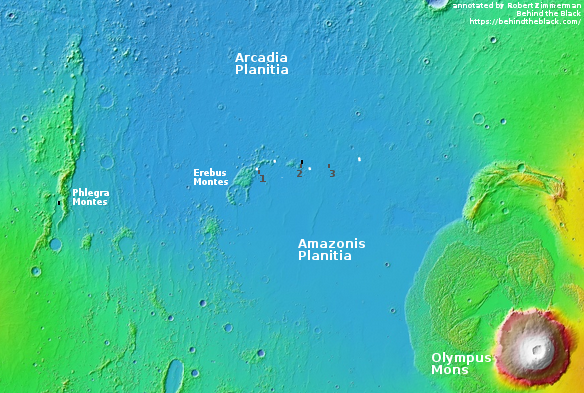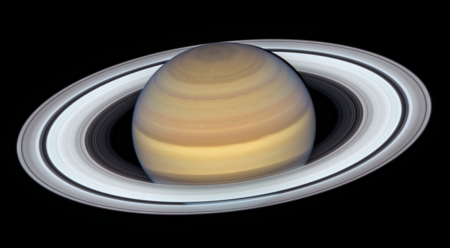The never-ending snowstorm circling Saturn
New data suggests that the water being spewed out of Enceladus’s tiger stripes is depositing so much snow and ice on Saturn’s three inner moons, Mimas, Enceladus and Tethys, that these moons, as well as Enceladus, are about twice as bright in radar than previously thought.
Dr Le Gall and a team of researchers from France and the US have analysed 60 radar observations of Saturn’s inner moons, drawing from the full database of observations taken by the Cassini mission between 2004 and 2017. They found that previous reporting on these observations had underestimated the radar brightness by a factor of two.
Unprotected by any atmospheres, Saturn’s inner moons are bombarded by grains of various origins which alter their surface composition and texture. Cassini radar observations can help assess these effects by giving insights into the purity of the satellites’ water ice.
The extreme radar brightness is most likely related to the geysers that pump water from Enceladus’s internal ocean into the region in which the three moons orbit. Ultra-clean water ice particles fall back onto Enceladus itself and precipitate as snow on the other moons’ surfaces.
Dr Le Gall, of LATMOS-UVSQ, Paris, explained: “The super-bright radar signals that we observe require a snow cover that is at least a few tens of centimetres thick. However, the composition alone cannot explain the extremely bright levels recorded. Radar waves can penetrate transparent ice down to few meters and therefore have more opportunities to bounce off buried structures. The sub-surfaces of Saturn’s inner moons must contain highly efficient retro-reflectors that preferentially backscatter radar waves towards their source.”
While the new results suggest that the surfaces of these moons are much brighter that expected, I find the circumstances they describe far more fascinating: a never-ending snow storm in the orbits around Saturn and landing continually on these moons.
My, isn’t the universe wonderful?
New data suggests that the water being spewed out of Enceladus’s tiger stripes is depositing so much snow and ice on Saturn’s three inner moons, Mimas, Enceladus and Tethys, that these moons, as well as Enceladus, are about twice as bright in radar than previously thought.
Dr Le Gall and a team of researchers from France and the US have analysed 60 radar observations of Saturn’s inner moons, drawing from the full database of observations taken by the Cassini mission between 2004 and 2017. They found that previous reporting on these observations had underestimated the radar brightness by a factor of two.
Unprotected by any atmospheres, Saturn’s inner moons are bombarded by grains of various origins which alter their surface composition and texture. Cassini radar observations can help assess these effects by giving insights into the purity of the satellites’ water ice.
The extreme radar brightness is most likely related to the geysers that pump water from Enceladus’s internal ocean into the region in which the three moons orbit. Ultra-clean water ice particles fall back onto Enceladus itself and precipitate as snow on the other moons’ surfaces.
Dr Le Gall, of LATMOS-UVSQ, Paris, explained: “The super-bright radar signals that we observe require a snow cover that is at least a few tens of centimetres thick. However, the composition alone cannot explain the extremely bright levels recorded. Radar waves can penetrate transparent ice down to few meters and therefore have more opportunities to bounce off buried structures. The sub-surfaces of Saturn’s inner moons must contain highly efficient retro-reflectors that preferentially backscatter radar waves towards their source.”
While the new results suggest that the surfaces of these moons are much brighter that expected, I find the circumstances they describe far more fascinating: a never-ending snow storm in the orbits around Saturn and landing continually on these moons.
My, isn’t the universe wonderful?







